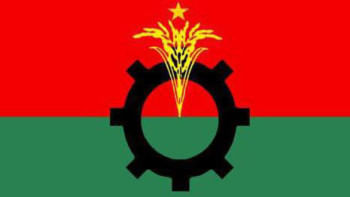Colonial law doesn't do justice to rape victims

The current definition of rape in our Penal Code was formulated in 1890 back in colonial times. Even when the Nari-o-Shishu Nirjatan Daman Ain (Women and Children Repression Prevention Act) came into force in 2000, this new statute retained the colonial definition of "rape" almost as it is with only a few additions.
The definition in section 375 of the Penal Code describes that "penetration" is sufficient for it to be considered as sexual intercourse. However, the definition of "penetration" is not given anywhere in the existing laws. Because the definition falls short of illustrating the meaning of "penetration", the traditional meaning of sexual intercourse is used by the courts to define rape, which leaves out several other ways of sexual penetration which are generally conceived as rape in many jurisdictions. The definition also fails to explain the meaning of the term "consent". In the absence of such explanations, in many cases, courts have in the past relied on evidence of "force" to show lack of consent and eventually interpreted rape from a gender-stereotypical perspective.
Another significant gap in the definition of rape in the Penal Code is that it refers only to a "woman" with whom a non-consensual intercourse would amount to rape. This clearly excludes a male child from the purview of the law. If a man rapes a minor boy of any age, he will be charged with an offence under section 377 i.e. "unnatural offences", and not for rape although the experience should be equally brutal and traumatising for a male child. On the other hand, the Nari-o-Shishu Nirjatan Daman Ain does not differentiate between a boy and girl child in its definition of "child". But because of how rape is defined by the Penal Code and how "penetration" is traditionally interpreted, a male child, or any victim of rape by a same sex perpetrator for that matter, will not find redress under the special statute—and such case can only fall under section 377.
One of the worst gaps in the existing definition of rape is that forcible intercourse with a girl child who is not below 13-years of age has not been criminalised as rape when the child is married to the offender. Although the Nari-o-Shishu Nirjatan Daman Ain sets the age for statutory rape at 16, it doesn't address marital rape of child brides and actually reinforces the Penal Code's definition by clearly specifying that the 16 year's age limit below which any sexual intercourse would be considered as rape will not apply to cases where the offender is in a marital relation with the girl.
This position is particularly challenging as it tacitly allows child marriage leaving no legal redress for a potential child victim of rape. This is not only contradictory to Bangladesh's international commitment to protect young girls from sexual exploitation, particularly its obligations to ensure the best interest of the child under the UN Child Rights Convention, but it also contradicts the existing domestic law of the country. Although, the recently enacted Child Marriage Restraint Act criminalises marriage of a girl below the age of 18-years, a penal law giving immunity to a perpetrator of rape if he can prove that the victim is his 13-years old "wife" is clearly an expression of the legal validation of child marriage. This encourages the culture of forced marriage of a child rape victim with the offender, which is again a violation of Bangladesh's obligations under various international treaties as well as its own constitutional guarantees.
Another important area where the existing provisions lack sufficient focus is rape by fraudulent enactment of marriage or by deceitful promise to marry. On several occasions, our Supreme Court had to adjudge whether sexual intercourse with a woman who believed that she was married to the offender because of some false staging of marriage, or that he intended to marry her based on a false promise, amounted to a rape or not. However, although the definition of rape given in our Penal Code does not specifically address this situation, a careful reading of section 9 of the Nari-o-Shishu Nirjatan Daman Ain says that a fraudulent promise to marry to induce consent in sexual intercourse, can very well be criminalised as rape. The explanation to Section 9 clearly states that a man would be said to commit rape when he "fraudulently" obtains consent. As such, legally, a false staging of marriage, or promise of marriage in order to induce consent to sexual intercourse, will certainly fall within the definition of rape given in section 9. However, because in such cases courts are usually overwhelmed by the "absence of force" during the time of the sexual intercourse, the initial "fraudulent" means or intention which induced such consent takes a backseat in the judicial consideration. In most such cases, the woman victim is left to bear the social reprimands for engaging in a premarital sex by the offender, along with the lone responsibility of an unborn "illegitimate" child.
Such gaps in the legal definition of rape impede the victims' right to get effective justice. It is unfortunate that our criminal justice system still defines rape in colonial language—without much change—compared to how the Indian Penal Code has moved on from this old colonial formulation of rape, and how British law itself has moved ahead with a separate statute for sexual offences. And so, formulating a definition that can more efficiently address the plight of rape victims remains long overdue.
Taslima Yasmin is an assistant professor of Department of Law, University of Dhaka.
Email: taslima47@yahoo.com






Comments